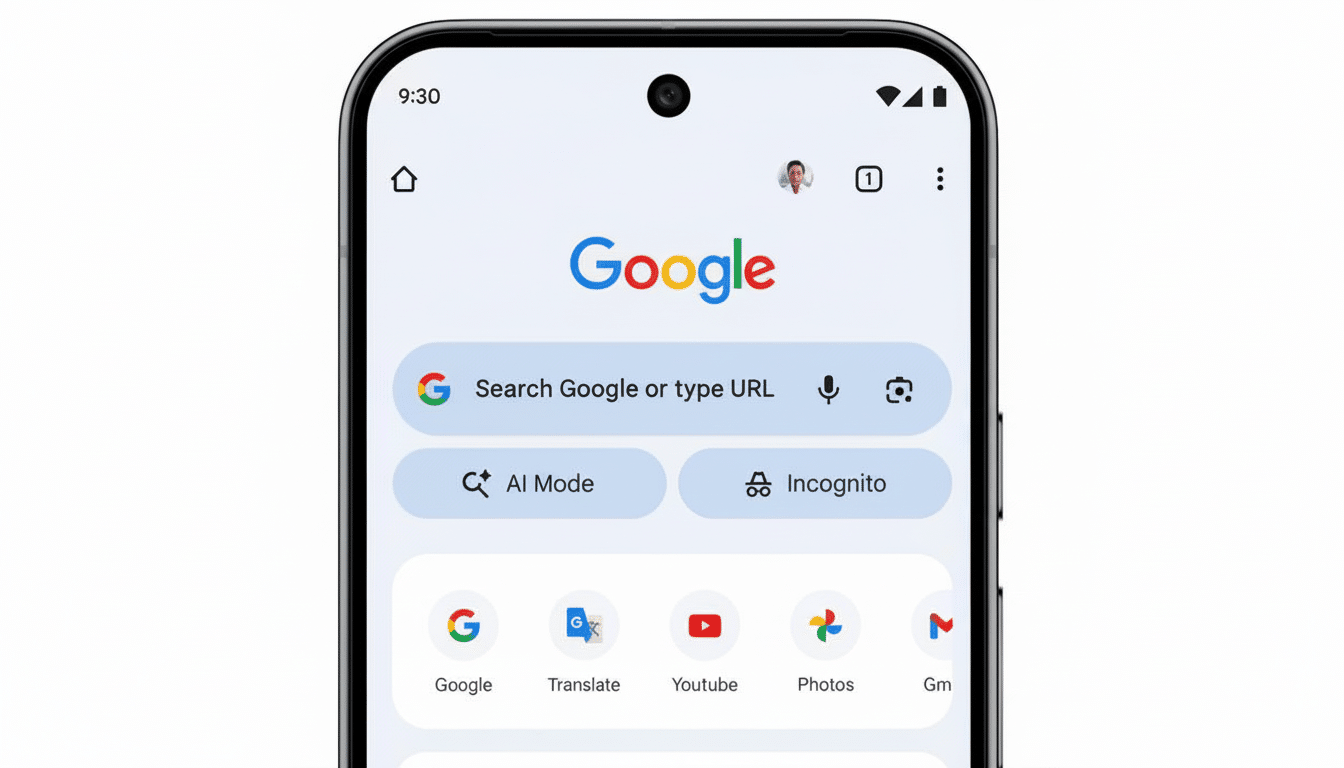Google is adding a glaring AI Mode shortcut to its mobile Chrome browser, accessible with just one tap right below the search box on the New Tab page for iOS and Android. It shortens the path to Google’s conversational search results so users can ask complicated questions and follow-up queries, then do it all again without leaving Search or opening another app.
The feature is starting in the United States and will soon be available in 160 other countries and a variety of new languages, including Hindi, Indonesian, Japanese, Korean and Brazilian Portuguese. The launch follows Google’s larger AI Mode expansion to 180 countries, and it also signals a shift toward pushing AI-first search functionalities as the default behavior on mobile.

What’s New And How It Has Worked So Far In Chrome
If you open Chrome on your phone and fire up a new tab, you should see an AI Mode button right underneath the search bar. Tap it to open a conversational interface backed by Google’s AI answers through Search. You can ask multi-step questions — say, “Compare mirrorless cameras under $1,000 for low light and then suggest a travel kit” — and iterate with follow-ups without drafting new queries from scratch.
This shortcut is essentially a way to combine a number of taps and menu dives into one single action. For mobile users already in the habit of short interactions, this location adheres to habits around the Chrome search field, eliminating some friction that prevents people from trying new modes.
Rollout And Language Coverage Across Markets
Google says the shortcut arrives stateside first before landing in 160 other markets, and the support for languages grows with availability. Among those out to an early start will be Hindi, Indonesian, Japanese, Korean and Brazilian Portuguese – the languages reflecting where mobile usage (and appetite for AI assistance) is taking off most rapidly.
On iOS, Chrome continues to operate on top of Apple’s WebKit, but the shortcut directs you into Google’s AI Mode within Search — there as well. And for people who bounce back and forth between working on an iPhone and an Android device (like me), this feature parity also helps to create a more consistent experience when you’re using the app for research or planning, as well as troubleshooting on-the-go.
Expanding Capabilities Within AI Mode For Tasks
Google has since been expanding AI Mode beyond summaries and citations. New “agentic” capabilities include the capability to assist users in booking event tickets and beauty or wellness appointments, extending a prior feature for finding and reserving restaurants. On a practical level, the user who checks out without leaving the AI-led flow will have been able to explore concert options, select their seats and proceed toward checkout.

Productivity features are expanding too. The Canvas tool can organize study plans or multi-session research in a side panel, while Google Lens allows you to ask about what’s on your screen or in an image. That is to say, you can snap a label, menu or device screen and ask for explanations, translations or what your next steps should be in the very same AI Mode session.
Why This Is Important For Mobile Search Today
A shortcut to AI answers is as much a competitive play as a usability tweak. Services such as Perplexity and ChatGPT Search have helped popularize conversational discovery, especially for complex queries that cannot be easily reduced to ten blue links. By positioning AI Mode below the Chrome search bar, Google reduces switching costs and retains users in its ecosystem for query, discovery and action.
The stakes are high on mobile. According to StatCounter, Chrome accounts for around 65% of worldwide mobile browser share, so Google has an enormous distribution lever. One well-positioned button can change behavior at scale — in this case very roughly 10% of Google users on the web — particularly when it aligns with what appears to be the most frequent entry point for them in the browser.
For publishers and for the web at large, the emphasis on AI-powered summations raises familiar questions about traffic flows and attribution. Google has claimed AI Mode is intended to help surface source links and spark deeper dives. How well those links drive qualifying visits will be a key metric for news outlets, e-commerce brands and creators as the feature rolls out.
How To Try It On Your iPhone or Android Device
Update Chrome on your iPhone or Android phone. Open a new tab and, underneath the search bar, you’ll see an AI Mode button. Tap to begin, enter or dictate your question, and then use follow-up prompts to narrow down answers. If you don’t see the shortcut yet, it’s rolling out, and language options will continue to populate in settings as they roll out in your region.
The shortcut does not alter the fundamental promise of AI Mode, but it definitely makes it much easier to access. For Google, that accessibility is exactly the point: If the first tap surfaces Search’s most powerful incarnation yet, more people are likely to use it.

